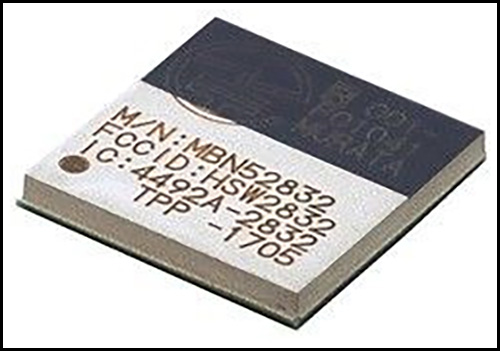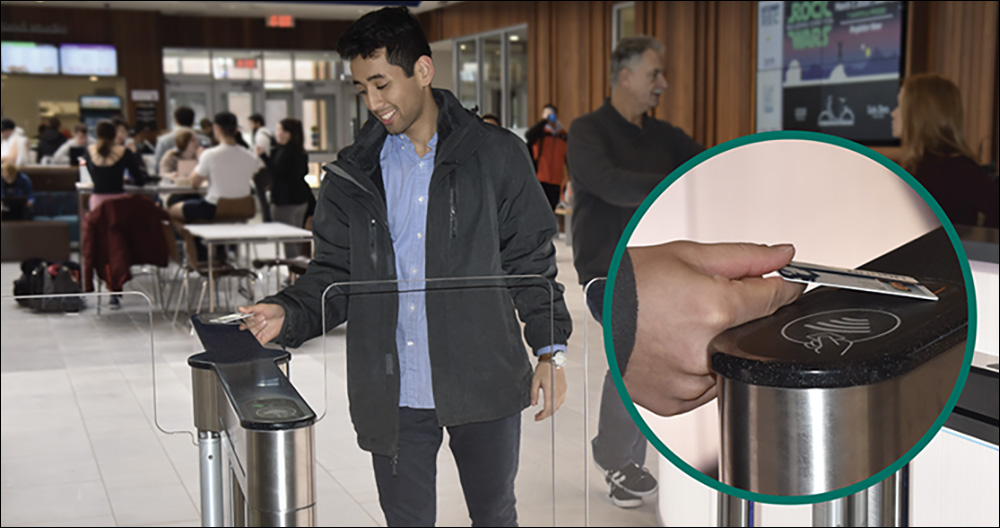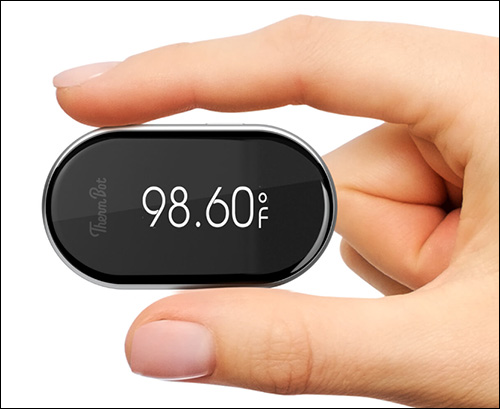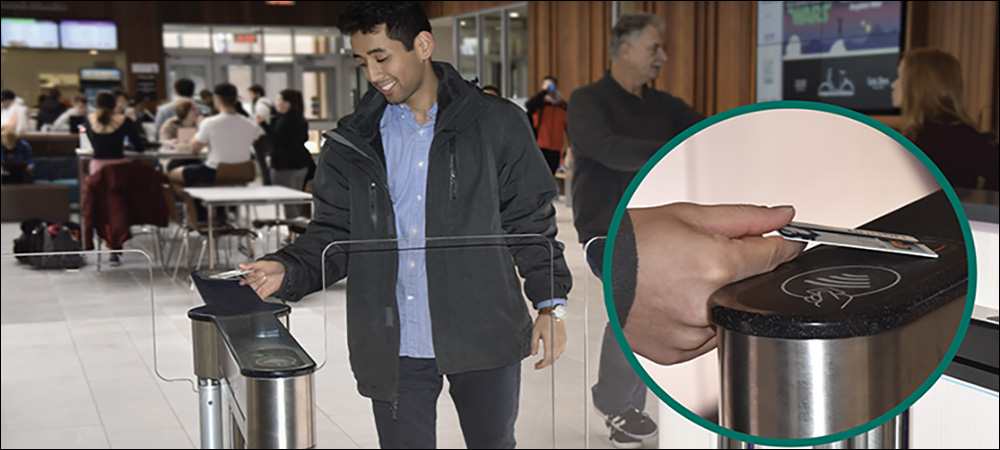Presented here are news announcements made during the past week regarding the following organizations: Murata Manufacturing, VitaNet, HID Global, the Smart Water Networks Forum, the LoRa Alliance, GTTFP Holdings, ThermBot A2B Tracking, Kerlink, GISupply, ABB and Accenture.
Murata, VitaNet Unveil Bluetooth Module for IoT Devices
Murata Manufacturing has announced that it has completed compatibility verification of its MCU-embedded Bluetooth Module (MBN52832) with VitaNet Suite, a secure Internet of Things (IoT) platform that VitaNet will begin offering this month. The Industrial Internet of Things (IIoT), also known as Industry 4.0, has been grappling with the challenge of improving productivity, the companies report. During the COVID-19 crisis, cloud-based remote and secure control via the IIoT, without the need for a highly trained workforce, has become vital.
VitaNet Suite allows IP network cloud control over non-IP Bluetooth IoT devices, and the Murata Module is compliant with the platform. The companies have incorporated the Murata Module and VitaNet Suite into Bluetooth Low Energy (BLE) IoT devices, allowing automated identification and authentication for device pairing, and thus enabling secure and remote IoT device control, including remote alive monitoring and automated data collection.

According to the companies, attaching a QR code that contains device information on pumps, motors and other industrial components eliminates the need for the LCD panel and operation buttons previously required for Bluetooth operation and management. The Murata Module thus facilitates the conversion of industrial components into secure IoT devices.
VitaNet Suite consists of middleware that runs on each gateway and IoT device, together with protocol conversion support from the cloud. VitaNet’s technology converts protocols between IP networks and non-IP Bluetooth, enabling the connection of hundreds of IoT devices with secure two-way encrypted communication via a single gateway. There is no limit to the number of IoT devices that a gateway can accommodate, according to the companies.
VitaNet-equipped IoT devices do not emit any radio signals during standby, ensuring privacy and preventing congestion in the 2.4 GHz band. The VitaNet Suite SDK is compliant with Bluetooth standards and utilizes BLE Security Mode 1 Level 4. The SDK features an API that follows programming flow to make it easier for users to develop applications for the product and the gateway.
HID Global Secures University Student IDs
HID Global, a provider of trusted identity solutions, has announced that the University of Connecticut (UConn) has selected its Seos smart cards and FARGO Connect secure issuance solution to optimize student services and strengthen security across its five-campus network. The FARGO Connect cloud-based platform enables UConn to decentralize ID issuance and reduce student wait times, the company reports, while the Seos technology addresses the vulnerabilities of its legacy system.
The university’s One Card office partnered with identification solutions supplier ColorID to upgrade its Husky One cards—which provide access to student essentials, such as dorms, dining halls and printing services—with Seos credential technology, in order to combat card duplication and fraud. “The biggest challenge for UConn was it needed to re-card its campus to bolster security,” said Cassie Bunner, ColorID’s higher education account manager, in a prepared statement. “We wanted to present the university with a technology we knew and had confidence in. HID was exactly that.”

Previously, the university’s card solution utilized proximity and magstripe technologies, which can be cloned. UConn’s 40,000 new Husky One cards retained magstripe and proximity technologies to minimize disruption to campus life, the company reports, while adding Seos technology for a phased university-wide transition to iCLASS readers. Once this is complete, UConn plans to remove the proximity technology and thus reduce card-issuance costs.
“HID Global is leading the way in providing universities with trusted-identity solutions so they can revolutionize processes that are vital for student success,” said Craig Sandness, HID Global’s VP and managing director for secure issuance, in the prepared statement. “With our HID FARGO Connect solution and Seos smart cards, UConn leverages best-in-class credential technology to secure its campus and simultaneously consolidates and streamlines its student ID issuance process.”
In the future, the One Card office plans to manage its high-volume credential requirements and expedite student delivery using FARGO Connect and HDP5600 printers. UConn administrators plan to encode, print and issue about 18,000 credentials annually from any device on campus with a Web interface. “Setting up our university with HID FARGO Connect will allow regional campuses to print cards directly for students—no wait, no temporary card,” added Stephanie Kernozicky, the director of UConn’s One Card office, in the prepared statement. “The mobility of being able to take pictures and print wherever we need was a big factor in selecting FARGO Connect solutions.”
SWAN Forum, LoRa Alliance Drive Network Coverage, IoT Adoption in Water Sector
The Smart Water Networks Forum (SWAN) has formed a new strategic liaison with the LoRa Alliance to advance smart, data-driven solutions in water networks, and to drive adoption of the LoRaWAN open standard in the water-metering sector. This agreement is intended to build off each organization’s membership pool and promote Internet of Things (IoT) deployments for smart network coverage.
As LoRaWAN technology expands its global footprint, utilities—water metering, in particular—are a major application for low-power wide-area networking (LPWAN) technologies, the company reports, and will occupy the largest market segment throughout the next five years, according to a market study conducted by IoT Analytics. Representing 30 percent of the installed base by 2025, the study indicates, utilities constitute the most use cases.
“Given the significant market opportunity, our two organizations will work together to drive a number of marketing initiatives with members,” said Donna Moore, the CEO and chairwoman of the LoRa Alliance, in a prepared statement. “This work will strengthen the ecosystem and bring valuable solutions to utility companies and public utilities’ end customers across the globe.”
The benefits that IoT and LoRaWAN connectivity can bring to the water-metering market are significant, SWAN reports, adding that LoRaWAN’s ability to communicate over long distances and through barriers makes it suitable for metering. Applications for utilities include access to real-time data, which enables leak identification and conserves natural resources. Utilities can monitor water quality to ensure consumer safety, provide proper water distribution, plan for water availability through peak periods and conduct billing management.
“As water metering is one of the leading use cases for LoRaWAN, there is a strong value proposition for utilities to benefit from this liaison between the two ecosystems to enhance the digitization of water utilities,” said Cisco’s Gary Stuebing in the prepared statement. Amir Cahn, the SWAN Forum’s executive director, added, “We are thrilled to partner with the LoRa Alliance and accelerate wireless integration that drives innovation across the global water sector, especially as remote working becomes the new reality and utilities seek continuity of operations.”
The two organizations recently collaborated on a webinar titled “LoRaWAN Solutions for Smart Water Management,” featuring several LoRa Alliance members and SWAN Council Member Fred Royan, from Frost & Sullivan. The webinar focused on how the LoRaWAN standard can be used to manage water metering, leak detection, water quality and more. A recording of this webinar can be viewed here.
GTTFP Holdings, ThermBot Intro Smart Temperature Reader
GTTFP Holdings has announced the launch of a digital health thermometer from ThermBot, and the company is now mass-producing the ThermBot units. The pocket-sized reader is about the size of a credit card, the company reports, and can fit in a wallet, purse, pocket or diaper bag, or on a keychain.
According to the company, the ThermBot device is designed to measure a person’s temperature in less than one second with 100 percent clinical accuracy. Its contactless operation is intended to make the process healthy and sanitary, and it is built to withstand repeated use and demanding environments. Parents can take quick and accurate readings from children unable to stay still, or who are sleeping, GTTFP reports, while travelers can bring the device on trips without it taking up much space.

In a prepared statement, a GTTFP spokesperson indicated that the FDA has given ThermBot the greenlight to mass-produce 250,000 units for immediate resale nationwide. “This is incredible news,” the spokesperson said. “The go-ahead was given by an FDA Emergency Hotline Senior Agent after just a five-minute phone call. Truly amazing, as the approval process can typically take at least 15 months.”
Other features include an embedded BLE chip that works with existing wellness-tracking apps, smart assistants and protocols like an IFTTT (If This Then That) platform. Unlike a traditional electronic thermometer that relies on battery power, this device draws power directly from a smartphone, power bank or tablet via a retractable type C connector. The device’s screen toggles between Fahrenheit and Celsius measurements for international use.
A2B Tracking Updates RFID Software
A2B Tracking has announced the release of version 3.0 of its A2B Tracking RFID Platform. This release provides enhancements to enable efficient counting, tracking and management of non-serialized assets with RFID technology, the company reports.
The new software version allows for faster inventory counts and management of items that move to and from events or job sites. Efficiency controls have been added to the platform to improve organizational productivity and workflow output. The system is designed to help organizations track, manage and report on critical assets in order to provide accountability and comply with government regulations regarding the use of RFID and barcode technologies.
Users can track and inventory both serialized and non-serialized assets, and A2B says it has introduced a functionality allowing users to group together common non-serialized assets, and to manage them as both individual assets and as a group. This allows users to provide updates regarding how many of a particular asset are on hand at a specific location. The grouping feature lets users create lists of assets in a group or a set, and it provides RFID tracking and inventorying capabilities for groups of items within a facility, or as they move to and from events or job sites. Users can check groups of assets in or out, the company notes, by performing physical inventory counts within seconds.
The app includes efficiency controls designed to reduce clicks so as to improve software usability and worker productivity. Such controls allow users to establish default settings for faster, streamlined repeatable processes. For common workflows like the check-out/check-in process, uses can establish default settings for either barcode or RFID scanning so they can move through the process quickly.
Kerlink, GISupply Partner on LoRa-based IoT Solutions for Health, Smart Agriculture
Kerlink, a provider of Internet of Things (IoT) solutions, in partnership with its Japanese distributor GISupply, has announced a package of applications for construction worker health and safety, as well as smart agriculture and smart aquaculture. The package combines Kerlink’s Wirnet iStations in LoRa-based networks with sensors from GISupply and other companies that enable multiple applications and are connected to GISupply’s cloud-based applications for end-user analysis and access.
A construction industry solution known as ezFinder BUSINESS Heat Stroke+ monitors workers for warning signs of heat stroke, which poses a threat to crews working in hot climates during the summer. This solution consists of a local wet bulb globe temperature (WBGT) device and wearable trackers for each worker. The WBGT device, which estimates the effects of temperature, humidity and visible and infrared radiation on humans, is used by industrial hygienists, athletes and the military to determine appropriate exposure levels to high temperatures. ezFinder BUSINESS Heat Stroke+ collects and reports data from both WBGT devices and wearables to estimate the risk of heat stroke for each worker.
A smart agriculture solution, Ushimiru, supports sustainable agriculture via a network that enables producers to monitor and track cattle grazing in large pastures, eating grass and fertilizing fields naturally. Grazing is less expensive than confined, indoor feeding, the company explains, but it carries risks for cattle. GISupply’s LoRa cow-monitoring collar tracks and monitors animals and indicates whether they have stopped moving, which could signal an animal is at risk. The Ushimiru system enables a geofence application that notifies owners if an animal has wandered out of a fenced pasture or is in a dangerous area, such as rough terrain.
Japan has one of the world’s largest fish economies, with aquaculture production in 2015 totalling nearly $4.4 billion, or 24 percent of total national fish production. Kerlink’s and GISupply’s smart aquaculture solution targets that market, as well as the global fish-farming industry, with a LoRa-based sustainable aquaculture business model. The solution is designed to improve the effectiveness of fish breeding by enabling producers to continuously monitor water quality and temperature, which is critical due to global warming.
“The robustness and flexibility of Kerlink’s Wirnet iStation are key features of these diverse solutions, because they are easy to deploy and simple to integrate with our technologies,” said Satoshi Kitaoka, GISupply’s president, in a prepared statement. “Equally important for our company and our customers, Kerlink stations are proven to be reliable in any environment.”
“Kerlink seeks to do business with innovative companies that have developed novel apps and solutions that bring the benefits of the Internet of Things to a wide range of businesses and companies,” added Tsuneo Tatara, the VP of Kerlink Japan, in the prepared statement. “As these three examples show, GISupply is one of those companies and, as our distribution partner in Japan, it will help Kerlink to grow its business in that important global market.”
ABB Adds IoT Company Accenture as Digital Development Partner
ABB has announced that Accenture has become one of its global development partners for digital solutions. The collaboration will build on ABB’s experience with digitalized processes for the transformation of industries, the companies report, as well as Accenture’s IT and OT architecture and software-development capabilities. Accenture has been an ABB supplier for software development and application management for several years. Accenture is focused on Internet of Things (IOT) technologies, while ABB is focused on addressing its customers’ needs for digital solutions.
“Accenture has been a trusted software development partner in the past years and has helped us to create valuable digital solutions that we market to our customers,” said Bernd Heisterkamp, ABB’s digital leader for motion, in a prepared statement. “We will focus on advanced condition monitoring services to prevent machinery coming to a standstill through predictive maintenance and shop-floor automation solutions to further increase factory efficiency.”
“Accenture’s deep ties with Microsoft and specifically the Azure technologies, will help us further accelerate our own and our customers’ digital transformation journeys,” added Erika Velazquez, ABB’s digital ecosystem manager for electrification, in the prepared statement. “Furthermore, the combination of Accenture’s vast expertise in commercial and industrial customer digital transformation with ABB’s leading electrification solutions for energy, asset and building management, opens up new prospects for both partners to offer more comprehensive solutions to ABB customers.”
“With the help of Accenture Labs around the world, Accenture will support ABB and its Ability Customer Experience Centers to design, prototype and deliver solutions that will generate new competitive advantages and drive strategic impact for ABB customers,” added René Wiedemann, Accenture’s managing director and ABB account lead, in the statement. “As industrial companies seek to improve their production and operations processes, many are looking to ABB for digitally-enabled products and services to support them.”


